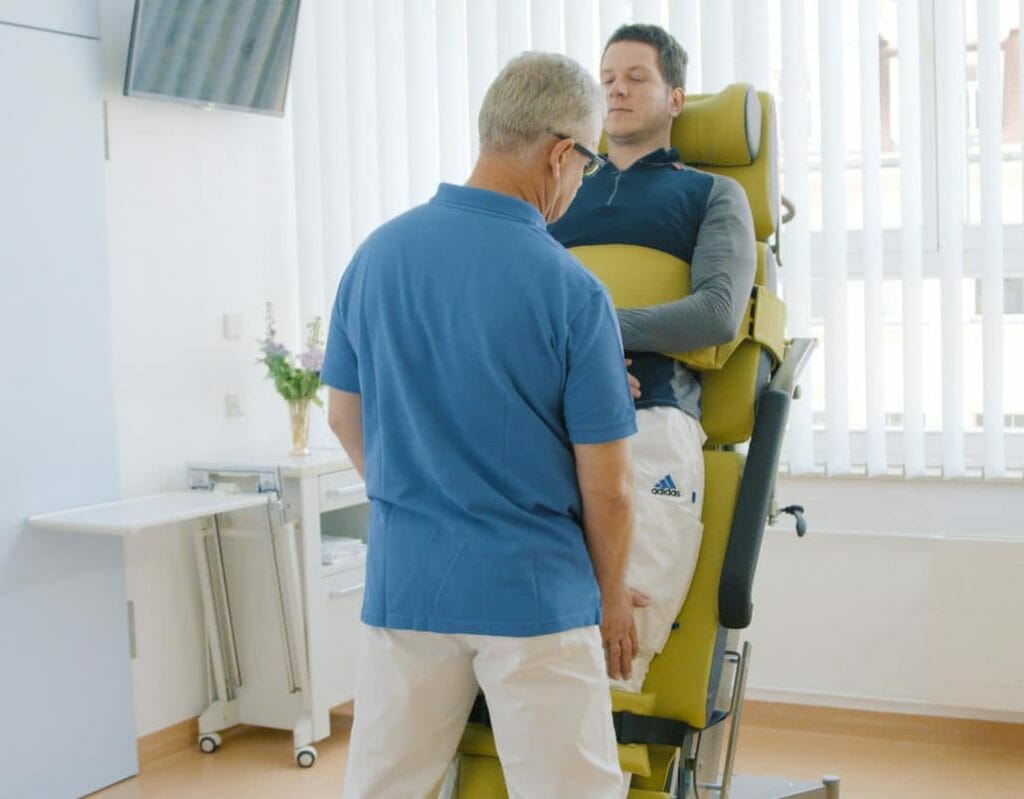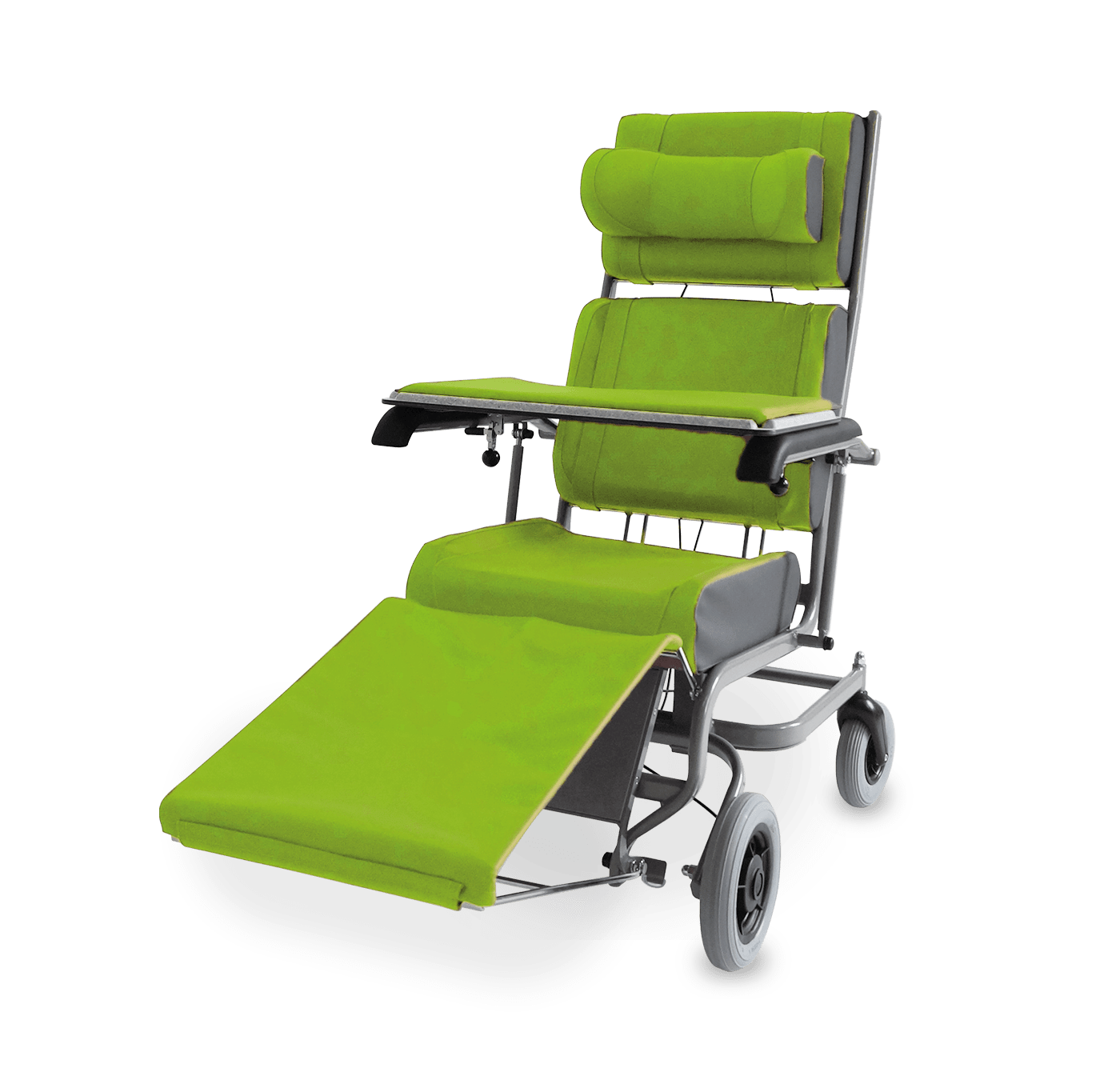
Examples of early mobilisation
- passive mobilisation by repositioning the patient several times. assisting mobilisation by helping to change the patient’s position. active mobilisation, in which the patient performs exercises independently under supervision.
The reason is very simple. If a person lies inactive in bed for a long time, the body rapidly degrades physical and mental abilities.
On average, 50-80% of patients receiving intensive care have impaired neuromuscular function due to damage to the nerves and muscles, which has led to the terms critical illness polyneuropathy and myopathy. Both components occur in combination in 30-50% of affected individuals; in the remainder, isolated myopathy predominates, while isolated neuropathy is rare. The descriptive term “intensive care unit-acquired weakness” (ICUAW) is now preferred.
*Med Klin Intensivmed Notfmed. 2017; 112(7): 589-596. Published online 2017 Sep 5. German. doi: 10.1007/s00063-017-0339-0; Critical-illness-Myopathie und -Polyneuropathie; D. Senger und F. Erbguth
To regain these abilities and skills, lengthy rehabilitation measures are usually required. Numerous studies confirm the experiences that nurses, doctors and therapists make every day in clinics around the world.
Patients who are moved early, i.e. mobilized, are psychologically in a better condition (reduction of dissatisfaction and aggressiveness) and regain their body feeling, balance and often “their old life” more quickly.
The risk of complications such as paralysis, sensory disturbances, balance problems, thromboses, pneumonia, embolisms and decubiti is significantly reduced. Rehabilitation is shortened and there is often no need for costly long-term care.
Advantages of early mobilization
Both patients and budget managers benefit from early mobilization. No patient likes to be in the intensive care unit and many long for the day of hospital discharge.
Early mobilization outcomes:
- Reduced ventilation time in the intensive care unit
- Reduction of complications Cognitive abilities are improved
- Treatment costs are reduced Shortened rehabilitation time
- Functional independence after hospital stay
The advantages of early mobilisation are obvious from a medical point of view and have been proven by many studies. Those interested in the topic of early mobilization will find numerous articles, studies and further information on the website http://www.fruehmobilisierung.de/Fruehmobilisierung/Start.html. The website was initiated by Peter Nydahl, who together with others founded the “German Network for Early Mobilization of Ventilated Patients”.
Wir bewegen Patienten
With Mobilizer® we offer nurses and therapists in clinics, care facilities and out-of-hospital intensive care an aid with which patients can be mobilized much earlier and more comprehensively.
Early mobilization with a Mobilizer® can be started if there is no clear contraindication (increased intracranial pressure, active bleeding, acute myocardial ischemia, agitated delirium).
That is, long before a patient can sit at the edge of the bed or stand in front of it.
Mobilize severely affected patients
Intubated patients and patients without postural control who are connected to monitoring devices can also be moved with a Mobilizer®. The patient is transferred to the Mobilizer® via a rolling board.
To ensure that this can be done without complications, Mobilizer® is moved to bed height in the prone position. With its approval for a patient weight of 250 kg, even obese patients can be moved with Mobilizer®.
With the patient lying on Mobilizer®, the patient can be slowly, gently and smoothly raised to a sitting position. Padded straps and cushions help position the patient safely and comfortably.
Depending on the therapy goal and the patient’s condition, the user is able to determine the patient’s position and positioning.
The individually adjustable therapy table is particularly important and helpful, for example, to achieve a positioning of the upper body that facilitates breathing and relieves the auxiliary respiratory muscles.
With a Mobilizer® MEDIOR it is possible to raise the patient up to an upright position (90°).
Technology – developed from practice
Mobilizer® are not conventional mobilization wheelchairs which are often colloquially called mobilization wheelchair, mobility chair, mobility chair or rehabilitation wheelchair.
What makes Mobilizer® so special are its innovative features and functions, which are developed in collaboration with experts from the clinical field.
A special, patented technique for raising inactive people is the “length compensation” with automated “seat bending”. This technical concept prevents shearing forces and friction in the back and buttocks area during the raising movement, which would promote the development of pressure sores or, in the case of patients in oncology or palliative care, spontaneous fractures. The affected person can be moved very gently and practically painlessly from the lying position to sitting. Since no fixed side parts interfere with a lateral transfer, even patients with restricted breathing can be transferred out of bed or back in a sitting or semi-sitting position without any problems.
The vibration module in the footstep of the Mobilizer® MEDIOR was developed in cooperation with Prof. Dr. med. Stefan Hesse.
Verticalization in the Mobilizer® MEDIOR results in increased tension of the muscles when “standing up”, especially the gluteal and thigh muscles, which are also activated when standing up naturally.
The vibration module ensures that patients can also be stimulated via the sole of the foot while sitting or standing. The design of Mobilizer® MEDIOR ensures that the vibratory stimulation is not limited to the sole of the foot, but acts as a “whole-body vibration”.
The vibrations generated by the vibration module are perceived differently by the person concerned, depending on the intensity of the vibration and, above all, the positioning on the Mobilizer® MEDIOR.
The vibratory stimulation in Mobilizer® MEDIOR has a positive effect on:
- Vigilance and attention
- Delirium management
- Motor control Sensory reduction Spasticity
- Strengthening muscles from.
Our customers report that they also observe improved expectoration of lung secretions after vibratory stimulation.
Frequency and time intervals can be controlled easily and individually via a touch display.
Mobile, agile, robust, strong
With a Mobilizer® patients with a body weight of up to 250 kg can be moved.
Despite its sturdy construction, Mobilizer® Medior is surprisingly maneuverable. Four 360° swivel casters and a central brake and steering system help users maneuver Mobilizer® through narrow hallways and doorways.
Batteries with so-called low voltage ensure maximum electrical safety and constant operational readiness. They can be charged overnight at the charging station. The capacity of the batteries is designed for one working day. The user is informed about the battery status visually and acoustically (critical battery status).
Would you like to see a Mobilizer® in action? We would be happy to present our Mobilizer® at your site.
The medical product consultants in our company are all experienced nurses or physiotherapists or occupational therapists. With their professional expertise, they are also available on request for hands-on training to support your employees in carrying out mobilisation on patients. In the “rehamates Academy“(in progress) we offer regular training courses and webinars on the subject. Have a look. Our colleagues always prepare exciting topics for you and give helpful tips for the use of a Mobilizer®.



